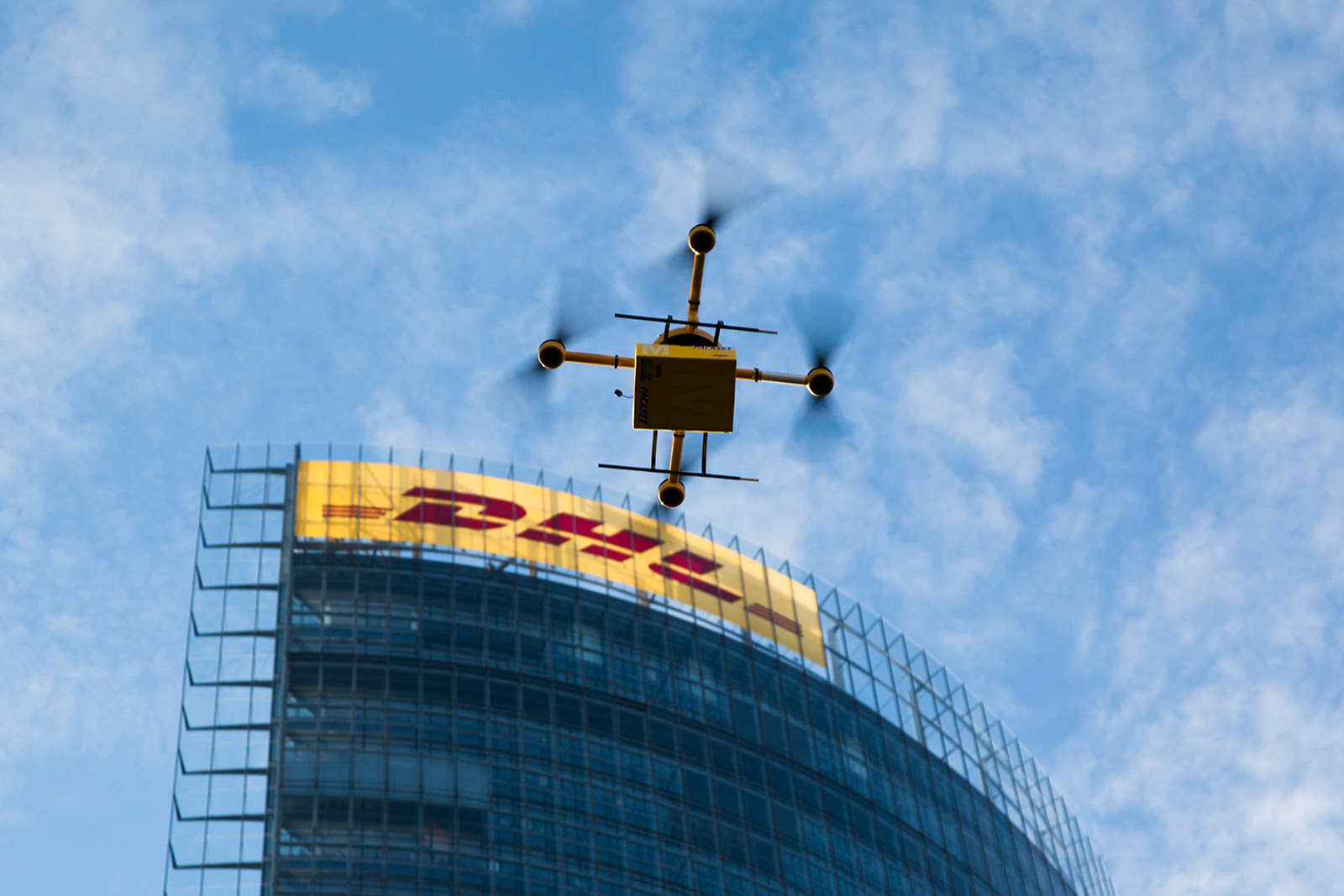Showing posts with label drones for good. Show all posts
Showing posts with label drones for good. Show all posts
Tuesday, February 4, 2014
A bug's eye view, brought to you by a nano quadrotor drone.
What's better than a tiny drone that buzzes like a bee through offices and hallways? How about a tiny drone shielded with a 3D-printed frame, controlled by a Raspberry Pi base station, and equipped with a miniscule video camera and transmitter?
Tags:
3d printing
,
aerial drones
,
Bitcraze
,
Crazyflie
,
drone journalism
,
drones
,
drones for good
,
FPV
,
maker
,
nano copter
,
nano drone
,
nano transmitter
,
rapid prototyping
,
STEM education
,
unmanned aircraft systems
Monday, January 13, 2014
A discussion on deploying drones for international development
Last month, Deutsche Post DHL transported six kilograms of medicine from a pharmacy in Bonn, across the Rhine River, to its headquarters.
This wouldn't have made international news, except that DHL accomplished this with an unmanned aircraft system - commonly known as a drone.
This came less than a week after Amazon's Jeff Bezos claimed his company would deliver products to customers' doorsteps via drone in three or four years. Regulations and technological hurdles would make Bezos' plan all but impossible in the US near-term, but DHL proved that with proper planning and logistics, you could deliver small parcels with small drones today.
On January 22, The International Research and Exchange Board, or IREX, will be hosting a "deep dive" discussion on how this same technology could benefit international development.
Tags:
deep dive
,
drone journalism
,
drones
,
drones for development
,
drones for good
,
IREX
,
RPAS
,
sUAS
,
UAS
,
UAV
Friday, August 16, 2013
Even with a ton of drone regulations, there was a ton of innovation at the SUSB Expo
 |
| An MLB Company representative shows the company's Super BAT's camera gimbal system to an audience member during the SUSB Expo, in San Francisco, CA. |
It's not very often you get the chance to watch the birth of a multi-billion dollar industry firsthand. But if we are to believe the Association for Unmanned Vehicles and Systems International (AUVSI) economic report, which estimates the unmanned aviation industry should reach $82 billion by 2025, that's exactly what happened at the first-ever small business expo for unmanned aircraft, the SUSB Expo, in San Francisco.
"It's like being in Steve Job's garage," said Agriflight's Bruce Parks, as reported by Robohub's Andra Keay.
Tags:
3DRobotics
,
Chris Anderson
,
drones
,
drones for good
,
San Francisco
,
SUSB Expo
,
sUSBExpo
,
unmanned aircraft
,
unmanned aircraft systems
Thursday, July 11, 2013
Why the word "drone" is scaring neighbors, creating bad legislation, and blocking an economic boom.
This disruption had a passing resemblance to what happened to other American industries. The hard work once done by skilled, human hands was now being automated by the calculating actuators of a machine.
Automation had long since dominated the appliance, automotive, and electronics industries. But this was a brand new territory – aviation.
The reduced price and size, and the increased reliability and capability of processors, sensors and batteries meant unmanned aviation had been unleashed. A nouveau DIY revolution meant that basements and garages were once again incubating nascent technology, just as they did in the 1970s when the personal computer was being developed.
The silver lining is that the cost of search and rescue, disaster relief, monitoring wildlife, guarding endangered animals from being poached, and even medication delivery to underserved populations all could be slashed.
Like many other small startups in the unmanned aviation industry, my friend and her husband saw an opportunity. And despite criticism of slow progress on regulations, the Federal Aviation Administration also sees it. The FAA estimates that the market for commercial unmanned aerial systems will eventually reach $90 billion.
The Association for Unmanned Vehicles and Systems International (AUVSI) believes there will be an economic impact of $13.6 billion within 3 years that unmanned aircraft are integrated into the national airspace.
Where to start? What better way to get acquainted to the industry than attend one of the premier industry conference in the nation, hosted by AUVSI?
She learned about new applications for unmanned aircraft. She listened to a UAV operator who used his homemade robotic aircraft to assess flood damage in Thailand. The information gathered from the aerial vehicle allowed the government to make decisions that mitigated flooding in the country’s capital.
This was great. But when it came to talk shop, things became awkward when she used a five-letter word that began with the letter “d.”
“The conversation would just stop,” she said. “Just completely stop dead.”
Tags:
AR.Drone
,
AUVSI
,
Chris Anderson
,
diy drones
,
drone etymology
,
drones
,
drones for good
,
Marc Corcoran
,
Oregon SB 17
,
origin of the word drone
,
rise of the drones
Subscribe to:
Comments
(
Atom
)



